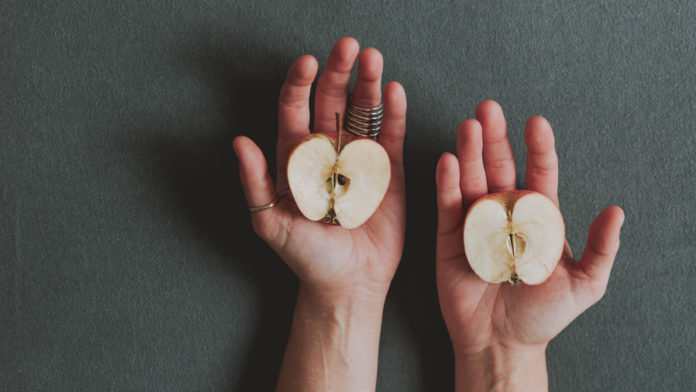In Nova Scotia’s Annapolis Valley, there’s an orchard that is unlike any other that you’ve seen. Over 1,000 apple varieties grow there in pairs, spanning well-known, rare, heirloom, and wild trees from around the world.
It’s called Canada’s Apple Biodiversity Collection (ABC), and it’s the perfect place to study how apples have evolved over time.
Apples are one of the most important fruit crops, with over 85 million metric tons harvested each year, making it the third most popular in the world by weight. The wild ancestral varieties from the forests of Kazakhstan over 3,000 years ago were very different from the cultivars found in grocery stores today.
Researcher Sean Myles, associate professor of agriculture at Dalhousie University, assessed 10 apple traits at ABC, where the trees all grew side-by-side under identical conditions. This gave a unique opportunity to see how domestication has changed the properties of apples. The study was published in PLOS ONE.
Wild apples were small, bitter fruits that are more like crab apples. Over time, people selected the seeds of their favourite apples to plant. While many of the traits studied didn’t change significantly, apples from today’s cultivars are 3.6 times heavier, 43 percent less acidic, and far less bitter than the fruits of their wild ancestors.
But these bigger, sweeter, and often redder apples have come with tradeoffs.
Higher phenolic content in an apple increases how bitter it tastes, and it also leads an apple to brown more quickly after biting or cutting into it. It makes sense that the apples most prized by consumers would have less phenols (often three times less according to the study findings), but these compounds also give apples their antioxidant properties and add to how nutritious they are.
On the plus side, decreasing acidity makes modern apples taste more sweet rather than sour, even without a significant boost to sugar content. Cultivated trees also tend to flower and bear fruit at a younger age, making it quicker for farmers to start earning revenue from new trees. They also tend to flower later in the season, helping reduce loss from late frosts. Coincidentally, the late-season blooming seems to follow a common molecular pathway with fruit firmness after harvesting, helping modern apples keep for weeks in the fridge.
This snapshot of the various traits that apples have had during their evolution gives lots of options for future breeding. For example, reintroducing higher phenolic content would make each apple more nutritious, and the bitterness could be counteracted by other factors to balance the taste. The study authors note that the cider industry also prizes high acidity and phenolic content — traits that are more common in wild apples.
“We may want to tap back into these ancestral apple varieties when breeding new varieties so that our future apples provide more protective effects against common diseases,” said Myles in a press release.
“This is one of the key purposes of establishing and maintaining Canada’s Apple Biodiversity Collection: to not only maintain the apple’s tremendous natural diversity, but to tap into that diversity for future apple improvement.”








































